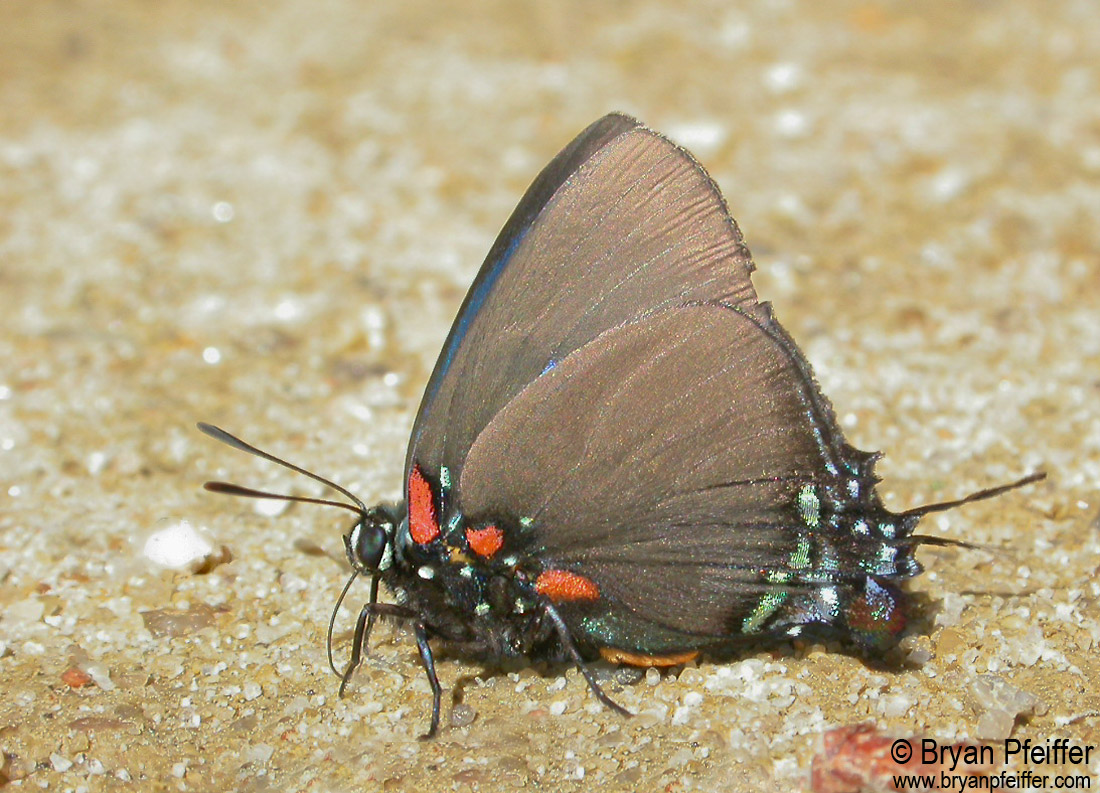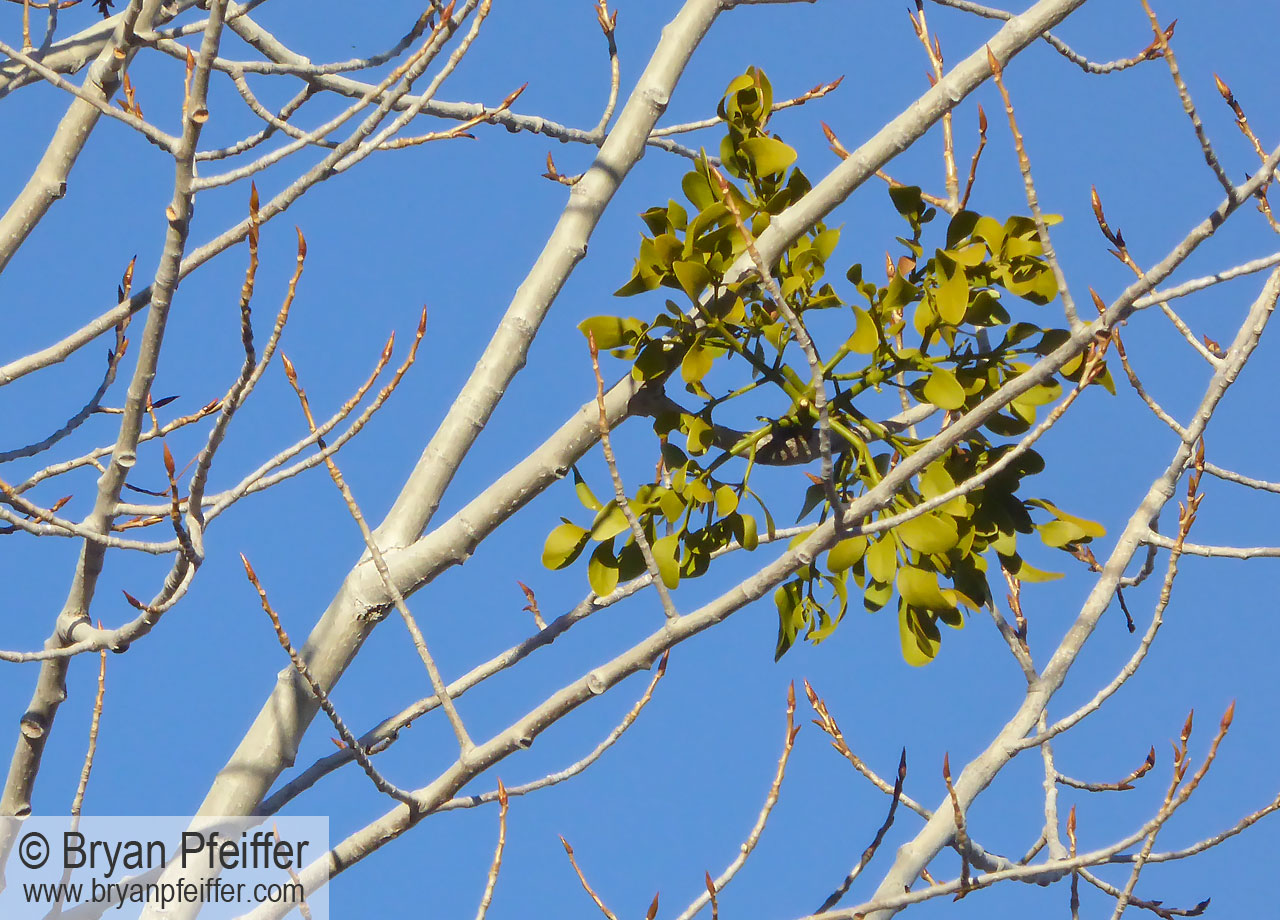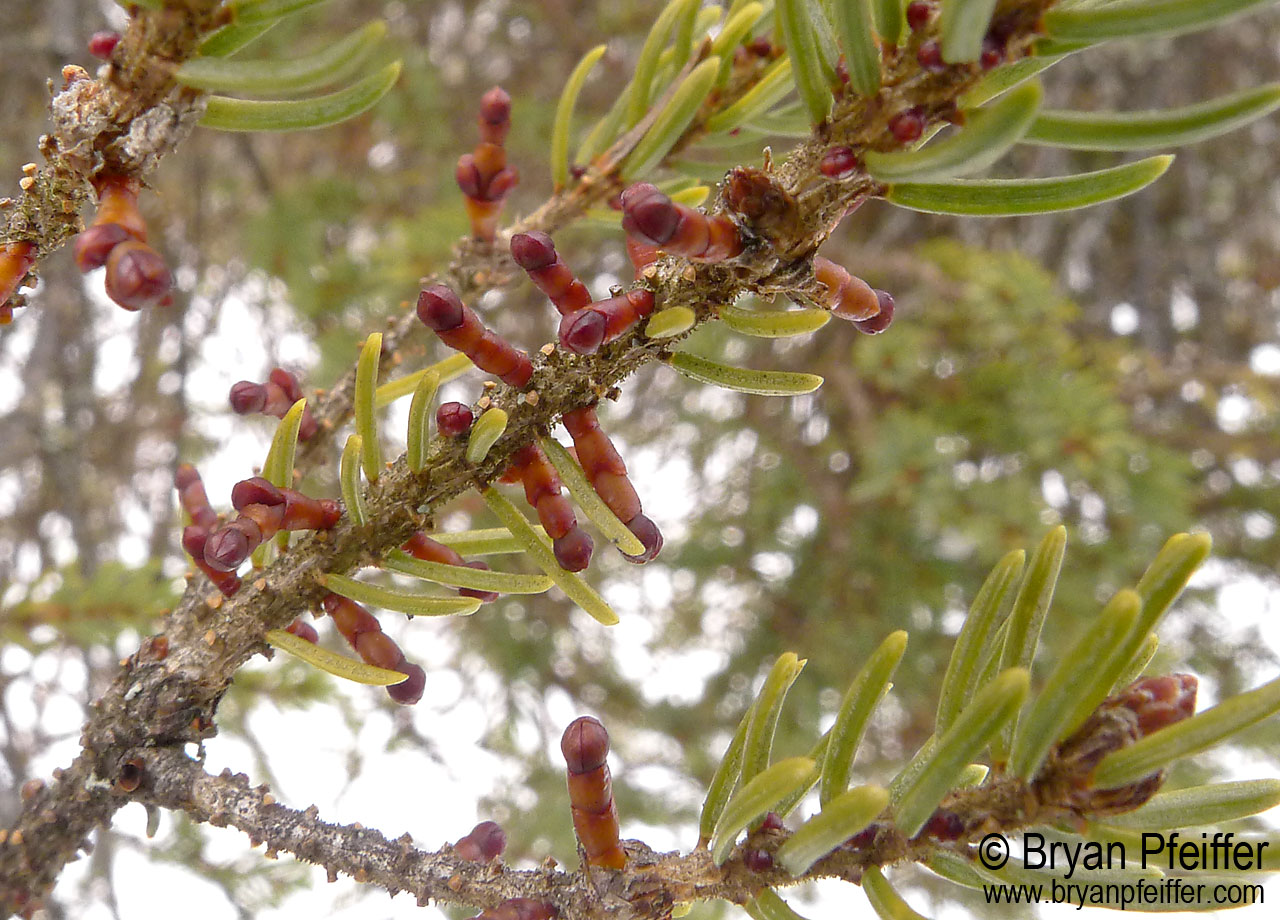Kiss This: A Higher Calling for Mistletoe
GET YOURSELF UNDER SOME WILD MISTLETOE this Christmas. Your gift might be a shock-and-awe butterfly called Great Purple Hairstreak.
Mistletoe is a plant that grows on trees or shrubs. And it’s a bit of a leech, a hemiparasite, which means mistletoe draws minerals and fluids from its host. But mistletoe is also photosynthetic, generating some of its own energy demands from sunshine. Oh, by the way, there is no one mistletoe. The world has more than 1,000 mistletoe species. I’ve got one of them in a cottonwood next to my cabin here in New Mexico. Mistletoes grow flowers, have pollinators, and produce fruits like many other plants.
In Arizona this past weekend, among thousands of butterflies, I encountered a single Great Purple Hairstreak. That’s usually how we find them, sluggish and alone, about the size of your thumbnail, crawling among flowers and lapping up nectar. But the business side of this butterfly, at least when it comes to mistletoe, is the caterpillar. Great Purple Hairstreak caterpillars eat mistletoe species in the genus Phoradendron (and maybe others).
After all, for butterflies, it’s all about the host plant – the plant on which (or near) the adults lay eggs and on which the caterpillars feed. So if you’re looking for a particular butterfly species, start by looking around its host. Great Purple Hairstreaks range across central and southern latitudes of the US, where we find a lot of that mistletoe. That’s the butterfly’s range map to the right. (Sorry, northerners.)
But this isn’t to say that we don’t have mistletoe up north. I’ve seen dwarf mistletoe (Arceuthobium pusillum) at home (where it’s rare) on black spruce in a bog in central Vermont. Dwarf mistletoe is an odd beast whose young shoots look, um, er, well … you’ll see below.
So, here you are, a few more photos: First, another Great Purple Hairstreak, which I photographed in Delaware; on this one you can see just a bit of its shocking orange abdomen. Then the mistletoe outside my cabin (where I’m wrapping up a book of essays, by the way). And finally that obscene dwarf mistletoe from Vermont.
Oh, by the way, Olivia Judson scooped me with a wonderful essay on mistletoe in Tuesday’s New York Times, although she didn’t mention Great Purple Hairstreaks.
Happy Holidays, everyone.






Hi Ray, Wow, go figure. I guess those deer must be eating a few Great Purple Hairstreak caterpillars as well!
In Mendocino County, CA the Blue Oak tree harbors a missletoe that is favored by local deer over any other plant. I used it to bait live traps to capture Blacktailed deer with missletoe and it worked better than apples or alfalfa! I always wondered what nutrient quality drove the deer to seek the stuff.